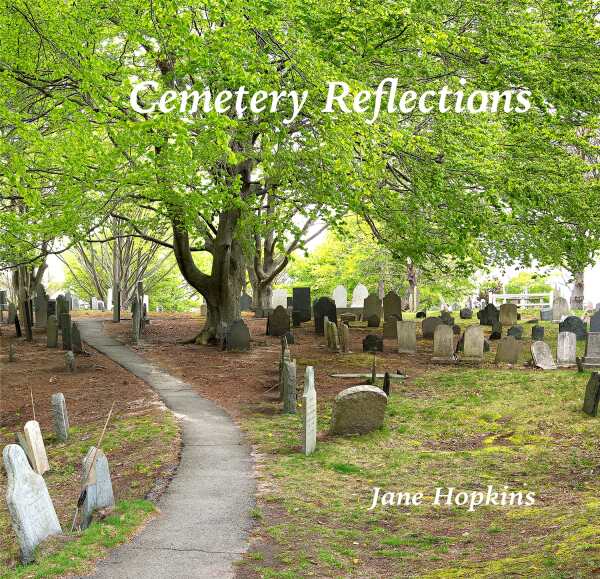Cemetery Reflections
Cemetery Reflections is eloquent as it meditates on the evolution of death, grief, and memorialization in the United States.
Jane Hopkins’s Cemetery Reflections pairs graveyard photographs with poems and reminiscences about death and memory.
This book of photographs and poetic excerpts concentrates on cemeteries and epitaphs from the US’s East Coast, with a visual overview of how graves and headstones evolved from colonial times forward. Almost all of the photographs in the book were taken by Hopkins. This visual record is striking, complemented by commentary on details such as the high number of graves commemorating children who died young in the past and family members who died in rapid succession due to illnesses like smallpox and yellow fever. Numerous graveside statues of small children reflect this historical reality.
The ways in which fallen soldiers are memorialized also receives some attention, with glimpses of the Gettysburg National Cemetery and its Soldiers’ National Monument, the World War II Memorial, and the Vietnam Veterans Memorial. The ashes of Holocaust victims are shown buried and mingled under a single tombstone in Savannah, Georgia. COVID-19 also weaves in and out of the pages, with words and images memorializing the one million Americans who died from it. The book highlights grave marker styles that fell out of fashion, as with the colonial preference for skulls and images of a personified death, which were replaced by images of angels, often thought to be more comforting and less macabre.
Death is universal, but it has become a taboo, sanitized topic, Hopkins asserts. And while death accompanies humans everywhere, how people interact with death around the globe varies. Thus, the second half of the book focuses more on human acts of grieving and memorialization. Full-color photographs of cemeteries and graves remain present on most pages, but the textual emphasis shifts to reflections on the nature of death. Hopkins shares reflections about her own deceased friends and family members, introducing a more vulnerable tone.
While some of the poetry is original, other verses are by anonymous writers of epitaphs; still others are by luminaries including Henry Wadsworth Longfellow, Harriet Beecher Stowe, Elizabeth Barrett Browning, and Christina Rossetti. Many mourn the loss of young life.Their tones are reflective throughout, pairing well with the peaceful images they accompany.
Death need not be terrifying, as Cemetery Reflections shows. The book is eloquent as it meditates on the evolution of death, grief, and memorialization in the United States.
Reviewed by
Jeana Jorgensen
Disclosure: This article is not an endorsement, but a review. The publisher of this book provided free copies of the book and paid a small fee to have their book reviewed by a professional reviewer. Foreword Reviews and Clarion Reviews make no guarantee that the publisher will receive a positive review. Foreword Magazine, Inc. is disclosing this in accordance with the Federal Trade Commission’s 16 CFR, Part 255.

